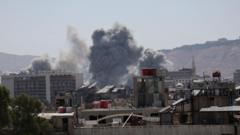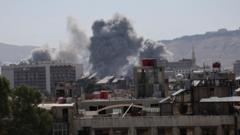The recent reduction of U.S. troops in Syria underscores a shifting security environment following the fall of Assad's regime. With the emergence of a unified Kurdish-led militia, stakeholders must carefully navigate ongoing threats, including the resilience of the Islamic State.
U.S. Reduces Troop Presence in Syria Amid Changing Context

U.S. Reduces Troop Presence in Syria Amid Changing Context
As the U.S. military withdraws troops from Syria, the evolving security landscape presents both new opportunities and challenges.
The United States is reducing its military presence in northeastern Syria, a move that reflects the changing dynamics in the region post-civil war. With President Bashar al-Assad's fall last December, the U.S. is scaling back its troop levels from 2,000 to approximately 1,400 by closing three of its eight small military operating bases. This decision comes as military leaders assess the situation on the ground, projecting the reduction of additional forces in the future.
Reports from senior U.S. officials indicate that American commanders have advised retaining a contingent of at least 500 troops within Syria to manage ongoing threats. President Trump, however, has cast doubt on the necessity of a continued American military presence in the region.
The Islamic State remains a significant concern in northeastern Syria, where U.S. forces are stationed. Despite this, the collapse of Assad's regime has alleviated other threats, particularly those posed by Iranian-backed militia forces and Russian military support to the Syrian government.
In a notable development, the Kurdish-led militia, which governs much of northeastern Syria, recently agreed to integrate with the newly formed Syrian government, suggesting a potential shift toward stability in a nation long marred by conflict. This merger marks a significant pivot in Damascus's strategies to unify a country still grappling with complex challenges and the remnants of warfare.




















